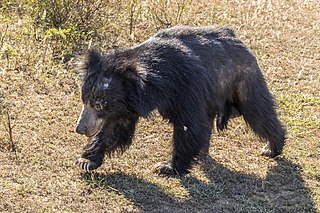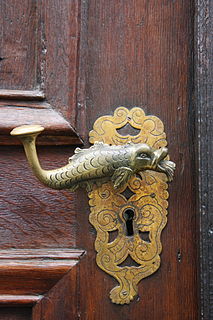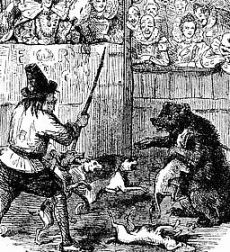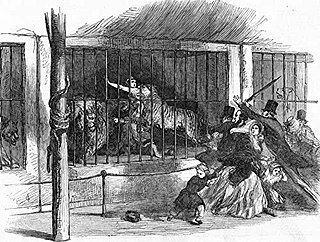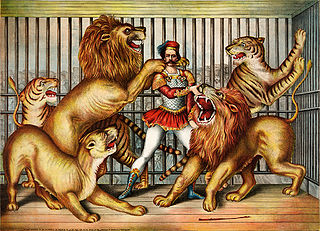Appearance
The beasts were shifted from their pens into wooden cages, which were then taken to the arena. After Rajput attendants left the ring, the Gaekwad pulled the ropes, which were attached to the doors of the cages. First the tiger emerged from its cage, then Atlas. [1]
The tiger was more than 10 feet (3.0 m) long, over 4 feet (1.2 m) at the shoulder, had long teeth and claws, besides strong shoulders, and was agile. People considered it to be the biggest man-eater that they ever saw in India. They chose an African lion to fight it, rather than an Asiatic lion in India, because the latter was considered to be too 'small' or 'timorous' to cope with the tiger. [1] In reality, it appears from reports of clashes between Indian lions and tigers, besides that they co-existed before the end of the 19th century, that Asiatic lions could compete with tigers. [7] [8] For example, a draw was reported by St. Landry Democrat (1887), [9] The Eaton Democrat (1887), [10] The Iola Register (1887), [11] The Milan Exchange (1887), [12] and The Sydney Mail (1889), [8] from The Sun (New York) , and a victory for the lion was reported by Herne (1855). [13]
Atlas looked taller at the head than the tiger, and had a large mane, legs, and paws. It was described by Gettysburg Compiler (1899) [1] as being "much superior to the black-maned lions of South Africa (themselves described as being among the largest lions) in bulk and bravery", that it, or its subspecies, was "the largest or most formidable of all African felidae", and therefore, that it was bigger than the Asiatic lion. However, it is not unanimously held that the Barbary and Cape lions were the largest lions (See Physical comparison of tigers and lions ). [14] [15] [16] Nevertheless, an English Colonel called 'Maitland', who supported the tiger, described the lion as a 'monster'. [1]
Both were hungry, as their diets had been reduced from their regular intake of food, beforehand. Gettysburg Compiler (1899) said "If the tiger was the personification of graceful strength and supple energy, the lion was the embodiment of massive power and adamantine muscle." [1]
The fight
The tiger crawled forward, crouched flat and calculated the distance for a spring at Atlas. Atlas' tail lashed at its sides, as it gave a deep roar and waited for the tiger to attack. The tiger sprang at Atlas, which then rose up on its hind legs, and crashed with the tiger. The two yelled, snarled and rolled over on the ground. They regained their feet and shook to be free. When they parted from the clinch, Atlas swung his right, clawed, paw on the tiger's head, ripping its ear, and scratching off skin. The tiger rolled off. Atlas went to get it, and swiped its paw, but the tiger managed to twist away from Atlas' paw-swipe, and escaped. Then Atlas advanced, but the tiger retreated. [1]
The tiger then jumped into the air, landing on Atlas' back, though Atlas was about 20 feet (6.1 m) away. At first, Atlas looked disgusted, but then it forced the tiger to the wall of the arena. However, the tiger did not decide to escape again, rather, it ran, with its head nearly at the ground, towards Atlas' legs. Despite a crash, the tiger's head did not shake, and the two cats rose on their hind legs. For at least three minutes, they exchanged right and left paw-swipes. The tiger's paw-swipes were faster than those of Atlas, outnumbering Atlas' paw-swipes three-to-one. Atlas' paw-swipes had been heavier, inflicting deeper gashes on the tiger's hide, than those of the tiger to Atlas' hide. Both cats injured, they retreated from each other. Blood flew from their flanks. The tiger retreated to the wall, to hug it, whereas Atlas stood his ground, even though blood was dripping from about twenty wounds, and roared ferociously. [1]
After resting for a few moments, the tiger tried to circle Atlas, with Atlas looking worried, as his rushes did not stop the tiger at first. Then, sensing an opportunity, Atlas charged, but the tiger avoided the charge, and jumped onto Atlas’ back again. Their bodies, bloodied and dirtied by the dust, rolled halfway across the arena. Atlas shook himself off the tiger, and delivered right swipes. One of the swipes dealt a blow to the tiger, causing it to stagger and retreat. After retreating, the tiger sat, studying how effective the previous tussle was. Atlas was mauled, but not yet killed, with two long rips on his back, having deep bites to the shoulder, which bled, and he panted hoarsely, with the wind flowing less evidently than that of the tiger. [1]
After observing Atlas for a moment, the tiger tried circling Atlas again. Atlas rushed, facing the tiger's claws. After the tussle, the lion, running out of breath, sank to his knees. The tiger, though it looked stronger, had its stripes disappear under fast-flowing blood. [1]
The tiger sprang onto Atlas, who now staggered. It bit Atlas' nose, then tried to bite Atlas' throat. However, the mane saved Atlas' neck, so the tiger's bite did not suffocate Atlas. Instead, as they wrestled much, the tiger managed to get hair in its mouth, and the hair interfered with the tiger's respiration, so it had to release its hold on Atlas, allowing Atlas to deliver a massive left uppercut. The uppercut caused the tiger to stumble to about 20 feet (6.1 m) away. [1]
The tiger circled Atlas like a snake. Although Atlas looked formidable and brave, he could not follow the tiger's motions. Then the tiger charged at Atlas. Atlas used his claws, but he missed the tiger, and went over with it. The tiger frantically pawed Atlas' body, using both fore and hind paws, for forty seconds. However, Atlas managed to throw the tiger off, but then Atlas tried to roar, before falling down and dying. [1]

